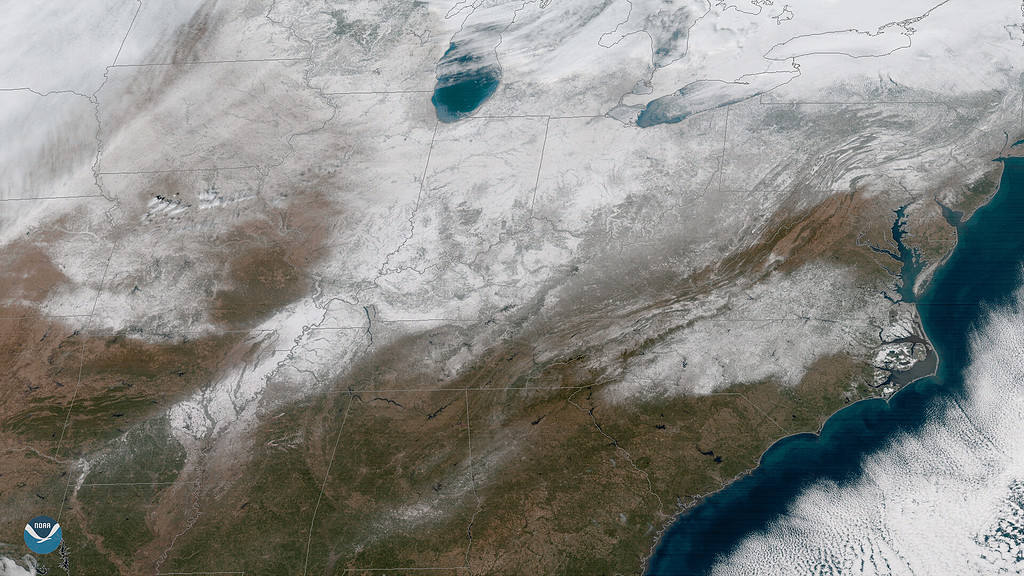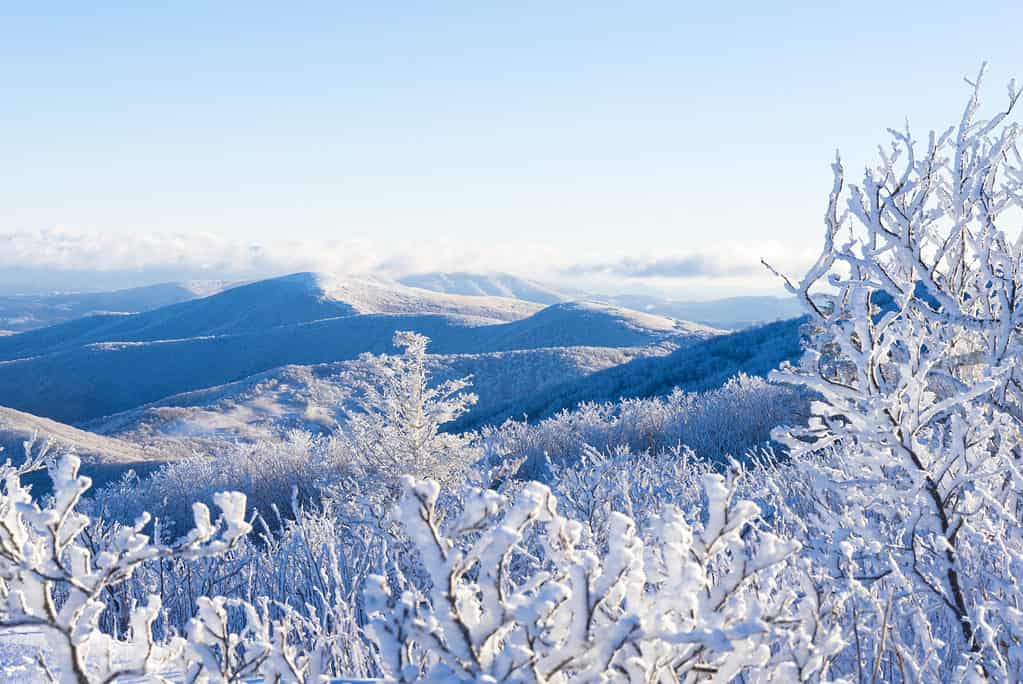If you imagine the snowiest place in the United States, your first thought probably isn’t Georgia. With hot and balmy summers, Georgia has a reputation for peaches, lumber, commercial industries, and pecan harvests. Still, the brief winter weather creates a fleeting environment for a bit of snow. Yes, it snows in Georgia, but you must go to the right place at the right time of year to witness it.
Read on to learn more about the snowfall in Georgia and where to visit to see it.
Average Snowfall In Georgia

Georgia’s warm weather doesn’t typically provide the right atmosphere for abundant snowfall.
©NOAA Satellites / CC0 – License
With a humid subtropical climate, Georgia’s general environment stays hot through a long stretch of the year. Winter weather lasts less than in colder states, dipping into the low 40s as the coldest average low temperature. While Georgia gets some snow, the amount is fairly low throughout the state. There’s a lot of rain, but southern regions seldom see a single snowflake.
The entire state sees an average of 1-4 inches of snow annually, while South Carolina to its north gets 2-5 inches a year. New Hampshire gets the most snow of any state annually, with 174+ inches.
What Parts Of Georgia Get The Most Snow Annually?

While mountain ranges in northern Georgia experience the most snow, urban areas also see an inch or two a year.
©Troy Sniff/iStock via Getty Images
By far, the snowiest place in Georgia is Mountain City. To the west, Georgia’s landscape meets mountain regions more prone to snow at high elevations and low temperatures. The Appalachian Mountains, which span 400 miles of Georgia’s land, receive almost 100 inches of snow annually above the state.
The Blue Ridge Mountains, a section of the Appalachian Mountains in Georgia, gets some of the most snow of any area. The northern region of Georgia has colder weather with the many mountainous areas, making it more susceptible to snow.
Georgia’s Worst Snow: January 23, 1940

While a few notable snowstorms have covered Georgia, most winters are mild, with barely an inch or two of snow.
©savoryexposure / CC BY-SA 2.0 – License
In the last century, the worst snowfall in a single day happened on January 23, 1940, resulting in over 10 inches of snow in a single day. Atlanta saw hours of snowfall that day, far surpassing the typical 2-4 inches that the area gets. Schools had to close for several days, and several powerlines had to be repaired in the following weeks.
In 1993, Georgia experienced the worst blizzard of its history, leading to 15 fatalities, despite only getting 4 inches of snow through most of the state. According to local reports, some northern areas experienced as much as 36 inches of snow at its worst; the blizzard went as far south as Florida with 56 inches of snow.
Other notable snowfall includes:
- February 10, 1934: 4 inches
- January 30, 1936: 6 inches
- March 11, 1960: 4 inches
- February 18, 1979: 4 inches
- January 12, 1982: 4 inches
- March 24, 1983: 7.9 inches
- January 07, 1988: 4.2 inches
- January 18, 1992: 5 inches
- March 13, 1993: 4.2 inches
While days of just a few inches are scattered throughout Georgia’s history, the state has also gone through many stints of no snow at all for years.
When Does Georgia Get The Most Snow?

If you want to build a snowman, Georgia’s snow might only bring enough in January.
©iStock.com/skiserge1
Even if you want to see snow, you’ll most likely need to watch the forecast between December and February if you drive north. January is the most likely to see snow because it is the coldest month. With an average temperature of 33.5° F at night, the right moisture in the air could leave you waking up to snow.
Mountain City gets the most snow during the year, though Rabun Gap and Sky Valley also get more snow. Mountainous areas have generally lower temperatures, meaning they are most susceptible to snow.
Georgia’s Snowfall By Month

Georgia sees minimal snow during the winter, followed by long summers with high temperatures.
©iStock.com/trekandshoot
While many factors affect how much snow falls in a given month, there is no official record of the amount of snow that Georgia gets per month. Since many reports show no more than trace amounts per year, this table features the snowiest day of each month in the last 100 years.
| Month | Date Of Most Snow | Amount Of Snow |
| January | January 23, 1940 | 10 inches |
| February | February 18, 1979 | 4 inches |
| March | March 12, 1993 | 4+ inches |
| April | April 24, 2021 | trace amounts |
| May | May 24, 1949 | trace amounts |
| June | June 07, 1955 | trace amounts |
| July | No notable date | trace amounts |
| August | No notable date | trace amounts |
| September | No notable date | trace amounts |
| October | No notable date | trace amounts |
| November | November 23, 1975 | 0.6 inches |
| December | December 31, 1963 | 2.2 inches |
The photo featured at the top of this post is © Annette Shaff/Shutterstock.com
Thank you for reading! Have some feedback for us? Contact the AZ Animals editorial team.






